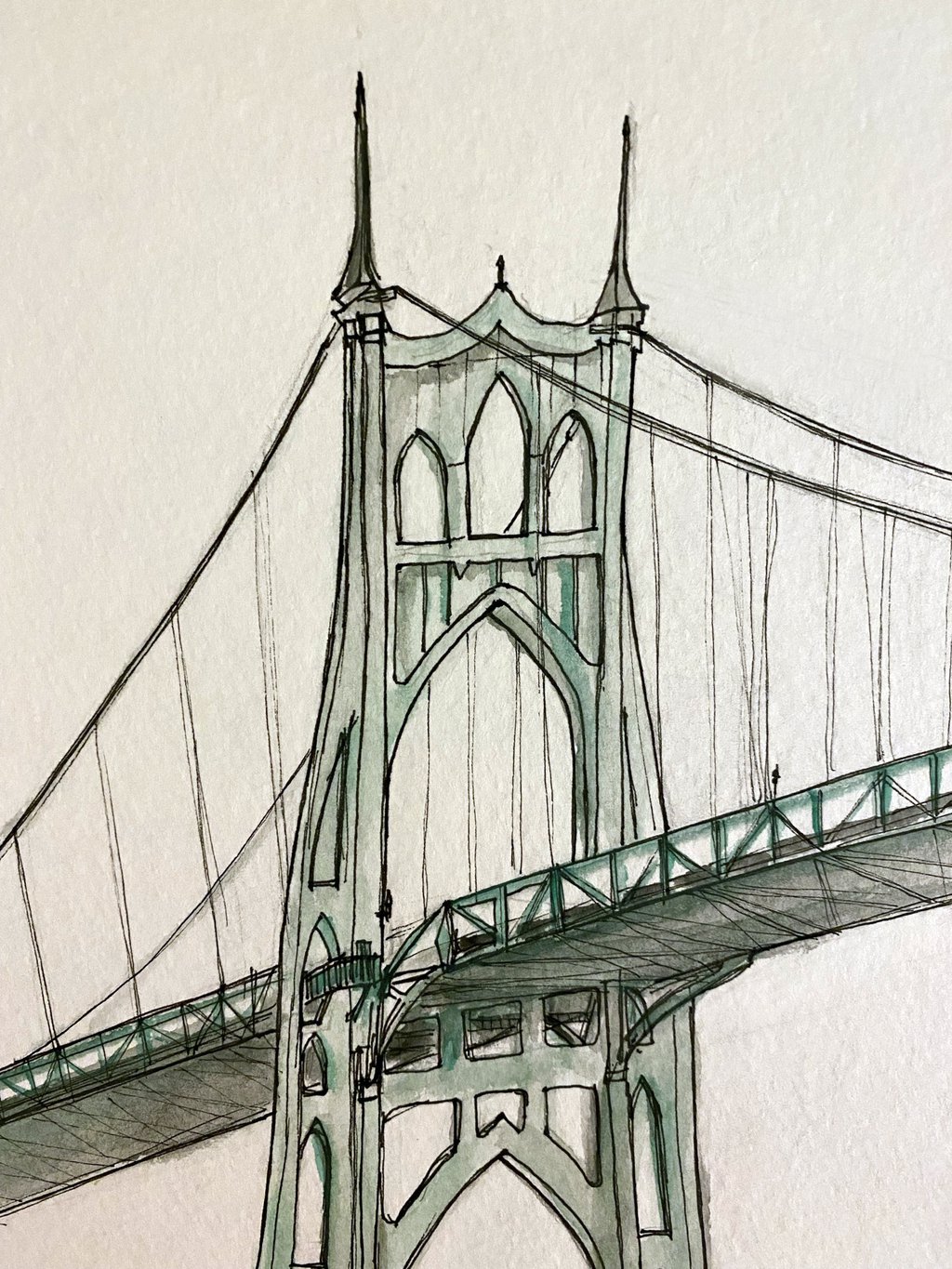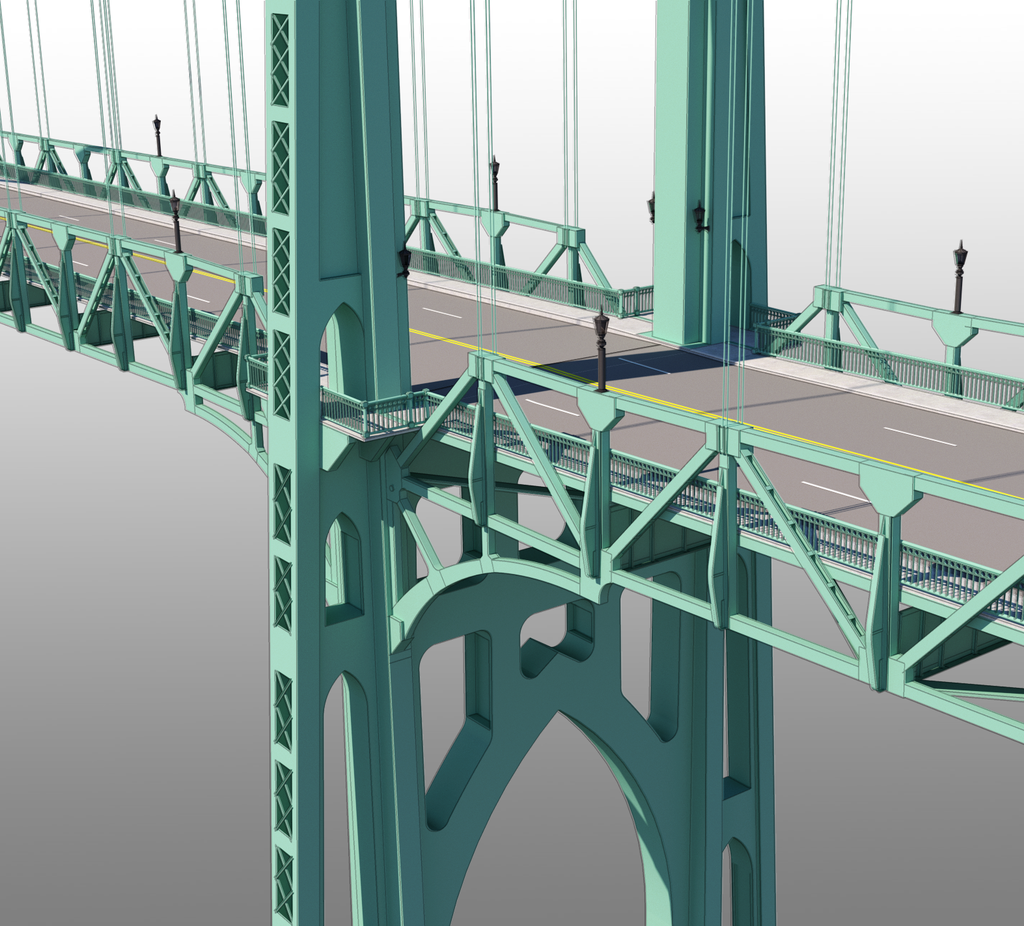
I don't think I'd ever heard of the St. Johns Bridge prior to moving to Portland. I may have seen a few pictures but could not comprehend the stature of it. Within the first weeks here, I was in absolute awe as I walked down Cathedral Park to the Willamette River. I can see why it's considered a hidden gem.
At the confluence of the Willamette and Columbia Rivers, Portland's St. John's Bridge is the city's northernmost bridge. It was pivotal to connecting the regions growing suburbs of Linnton and St. Johns. Before the bridge's existence, locals utilized ferries to cross the river or traveled down the long six miles southeast near central Portland.
In the St. Johns Bridge, the desire to secure a beautiful public structure was a governing consideration.
David Steinman, Engineering News-Record, February 13, 1930
-

Source: City of Portland Archives, A2004-002.9145
-

Source: City of Portland Archives
-

Source: City of Portland Archives, A2004-002.2771
Design Precedent
The bridge was designed by engineering firm Robinson & Steinman. Throughout David Steinman's previous bridge designs, you can see an iterative process through the Hercilio Luz Bridge (1926), Pont de Grand-Mère (1929), Mount Hope Bridge (1929), and Waldo-Hancock Bridge (1931). St. Johns Bridge is not only a utilitarian bridge, but also one that reflects a bold Gothic arch motif, unifying the entire span.
Construction of the bridge
Determining the location of the bridge was influenced by the shortest span as well as the existing street network. On the west side of the river was solid rock only a few feet below water level. On the east side, only sand and clay were present. The total length of the bridge is 3,609 ft., while the main span is 1,207 ft. flanked by two 430 ft. long side spans.
Furthermore, there are four main foundations, two of which help support the two towers and the other two anchoring the cable ties. The viaduct piers which hold up the approach from the east side was constructed with steel frames and reinforced concrete. The steel trusses were then suspended from the hanger ropes. And finally, the last phase of the construction was the road deck and concrete work.
Finished in 1931, St. Johns Bridge was at the time the longest suspension bridge west of the Mississippi.
-

construction of the concrete piers and towers
-

cable-stayed supports and rope were then hung
-

steel truss lifted into place
-

the roadway was the last phase of construction







Modeling Process
The approach I took in 3D modeling the bridge was similar to how the actual bridge was built. First off, I utilized the reference drawings provided by the Historic American Engineering Record (HAER No. OR-40) to base the model on accurate dimensions. Creating the organic geometry of the foundations and piers was a challenge. Due to the limitations of SketchUp right out of the box, going to the Extension Warehouse was necessary to achieve a loft between two lines. I used Curviloft throughout the foundations, piers, and anchorages. In order to reduce the amount of modeling work and to maintain a usable file, I essentially modeled half the bridge. For example, Curic Mirror allowed me to work on a quarter the tower, create a 'component', mirror in place, and then mirror again.
Considering this is a suspension bridge, the roadway is in no way flat-- it's suspended! The roadway is therefore held in place by the cables, auxiliary hanger ropes, and steel truss. The challenge was to model those portions of the bridge along a curved path. With help of Profile Builder V3 and in some instances the ‘follow me‘ tool, it saved me a considerable amount of time modeling each truss and picket.
Because of my background in architectural visualizations, it was an easy choice to use V-Ray in combination with a bit of post-processing in Photoshop.
Lastly, I do want to give kudos to Nick Falbo's award winning texture mapped SketchUp model created for an international bridge modeling competition sponsored by Google in 2009. If I could push my model even further, it would be great to use textures to see nuts and bolts on the towers as well as the character of the concrete piers around Cathedral Park.

